Coalescing
It’s been two and a half months since my last post which essentially puts me on track (at least for this crazy year) for my schedule of posting. It is not a schedule I prefer but considering the stressors to the nation and our health, it will have to be so. It is a small step taken beyond the usual routine of trying to survive.
That being said, I still am trying to incorporate the techniques and wisdom of John Paul Caponigro into my work flow and understanding of photography. To this point I have purchased four of his digital videos on color theory, photoshop techniques, color strategies and techniques, not to mention printing methods. For me it was a wonderful discovery to find this throve of knowledge. I have watched JPCs videos many times to absorb what seems to flow so casually from him but is quite earth shattering to me. I have listened and have learned. Thank you, JPC.
I have re-created many of my previous photos using JPC’s techniques over the last 2-3 months. The currently posted one is a composition of two photos (actually three) that were re-imagined and recreated to get me to a place I’ve never been before. While I am not totally pleased with it, it does capture the spirit I was trying to achieve when I captured these visual elements.
The currently posted photo was taken at Conimicut Point, Warwick, RI with a Canon DS 5DS, EF100-400mm f/4.5-5.6L IS II USM, F/16, 1/60″, ISO 160.
Catching Up
- At July 26, 2020
- By Firstmate
- In Uncategorized
 0
0
During this historic Covid-19 Pandemic it has been a chore to maintain any semblance of normality regarding usual daily routines. Basically, what is foremost in the minds of Rhode Islanders is to stay ALIVE and HEALTHY, despite what the so-called president and the rest of the nation is doing. I am proud to be a Rhode Islander and a citizen of the 13th State, and commend our Governor, Gina Raimondo, on her job of keeping us healthy and functioning.
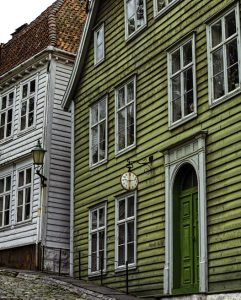 That being said, one of the major focuses for me during this Covid-19 self guaranteeing has been to increase my photo skills. Luckily, I have been able to do this having John Paul Caponigro’s instructional DVDs to learn from. I wish I had discovered them ten years ago or longer for they have really sharpened my understanding of the process of and practical application of photographic techniques.
That being said, one of the major focuses for me during this Covid-19 self guaranteeing has been to increase my photo skills. Luckily, I have been able to do this having John Paul Caponigro’s instructional DVDs to learn from. I wish I had discovered them ten years ago or longer for they have really sharpened my understanding of the process of and practical application of photographic techniques.
Since I am a Johnny-Come-Lately to this area of artistic expression in photography, I’ve had some catching up to do, but I do the best I can considering my handicaps. While my photos have improved, relative to what I had been doing, they are still a long way off to where I would like to take them—this zone of uncertainty is both confounding and energizing for I have to discover exactly where I want to go with my photographs. But, that is where I am at, at this particular junction of creative expression.
The currently posted photo is of Bergen, Norway in an historic area of the city. I tried to capture the atmosphere and style of the city lines and colors. The photo was taken with a Canon 5DS, using an EF24-105mm f/4L IS USM lens @ 65mm, f/8.0 @1/500, with an ISO 125, post processing with DxO PhotoLabs2, ACR, and PS 21.2.
Opportunity & Transformation
- At May 04, 2020
- By Firstmate
- In Canon EOS 5DS, John Paul Caponigro, Moon, RI
 0
0
My absence from this personal blog is best captured by the phrase, “Still waters run deep.” The New Year brought another bout with a cold which quickly became bronchitis which lasted until the end of March. If that was not enough, events became more dire with the worldwide pandemic of Covid-19. Luckily, I did not contract it. These several months provided an opportunity of time to reflection, re- reading many things on photography especially skill development.
Naturally, photographic style was always in the back of my mind, for I felt unsettled with what I was producing. From the previous posting in December 2019 I knew I was at the cusp of totally crafting my photos differently. During the winter I did a lot of experimenting in how I actually developed the photograph in post-processing. And, in tandem, how I printed the photographs.
The currently posted photo is a result of my transformative thinking about what I was producing. There is some of the style of John Paul Caponigro in it. The shot was taken at Conimicut Point, RI in late September awaiting the sunrise and a moon shot with a prominent foreground of Conimicut Lighthouse.
The photograph was taken using a Canon 5DS using an EF100-400mm f/4.5-5.6L IS II USM lens @ 135mm, f/8, 1/10″, ISO 200, using a Gitzo tripod, and postprocessing with DxO PhotoLab II, ACR, Photoshop CC.
Moving on from Maine
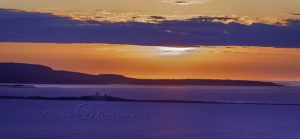 As I have expressed in recent blog posts, Maine has been quite a fruitful shoot and experience for me. I have spent much time and effort in trying to maximize the photo opportunities that I had had there (past perfect tense) during John Paul Caponigro’s Workshop.
As I have expressed in recent blog posts, Maine has been quite a fruitful shoot and experience for me. I have spent much time and effort in trying to maximize the photo opportunities that I had had there (past perfect tense) during John Paul Caponigro’s Workshop.
That being said, I believe that I am at the point of moving on. I am moving on for the photos that I took in Maine provided an opportunity to refine my skills, and they pushed me to do this simply because of the material of the shots that I took. The photographs may not have been my best but I learned a lot of critical skills in evaluating them.
The current photo was taken on the second day of shooting in Maine, 2019 at sunrise, near Sandy Beach, Acadia National Park. A Canon 5DS, with an EF100-400mm f/4.5-5.6L IS II USM lens @ 158mm was used, having settings of f/8, 1.8″, 320 ISO, and being post processed with DxO PhotoLab II, ACR, using HDR, and Viveza and Color Efex Pro.
Watershed Event
If you follow my posts for this blog, you know that I approached a recent photograph workshop with John Paul Caponigro with a modicum of trepidation, putting it mildly. I have been acutely aware of my strengths and weaknesses as far as my photograph skills goes, and I knew that I was going to be challenged at JPC’s workshop. I was not disappointed.
First of all, I have to say, that I divided the workshop into two halfs: one part getting up and putting oneself into the settings (4:00 AM; autumnal Maine, in this instance) to actually take the shots. This part was exceptional, for, indeed, we were up before the sun rose and placed in a setting that definitely had potentials for good to great shots; the other half was the actual class time of instruction. While taking the photos was difficult (especially in trying to be creative), the second part of the workshop was more difficult in trying to align oneself with the instructions and insights that JPC was giving. With honesty, I have to say that I tried my earnest to “be JPC” (as a Zen master would instruct), but I could only come to an approximation of maybe 50% (tops) to seeing the photo world as he does. That is fine with me, though, for I do not want to imitate JPC, but I want to capture the spirit and vision he has for great photographs.
At this moment, I know what a great photo is not. My next task is to dig into my creative spirit to find what a great photo is for me.
The currently posted photo was taken at the Azalea Garden in Acadia National Park. It was shot in the afternoon with a Canon 5 DS camera, using an EF24-105mm f/4L IS USM @ 105mm, f/7.1, 1/5″, ISO 125. Post processing was done using DxO PhotoLab 2, ACR, a Gradient Map, Viveza, and Nik Color Efex Pro. It is far from perfect, with only the lower half being in focus, but the colors were phenomenal.
Saving The Damned
- At November 09, 2019
- By Firstmate
- In Uncategorized
 0
0
This title is somewhat apocalyptic but as a photographer it is realistic in so far as some photos make the cut and some do not. In the process of culling photos to be or not to be acceptable, I try to save as many as possible by looking them from as many perspectives or artistic angles as possible, given my God given talents.
I believe that the currently posted Blog photo had merit and I tried to save it, but alas, I know I did not. I simply did not capture the essence of light that was present at the moment of capture, and consequently did not have enough pixels to work a miracle.
This photo was taken in my Autumn Adventure into Maine á la Caponigroland. Up before dawn, and with little light, I tried to capture those magical moments with a mechanical camera to try to match my living view of what I was experiencing. Alas, as in most cases, I did not achieve my goal.
At some point all of the incredibly myriad amount of details will collalese into a perfect photo that I will have command of and I will have the perfect photo of what I see. That is what haunts me and propels me to continue shooting.
The currently posted photo was taken at Sandy Beach in Bar Harbor, Maine., with a Canon 5 DS camera, EF16-35mm f/4L IS USM @35mm, f/8, 18″, ISO 50. Post processing was done using DxO Photo Lab 2, ACR, Viveza, Efex Pro, Photoshop using a Gradient Map, and adjustment for lighting and banding.
Into The Rabbit Hole with JPC…
- At November 04, 2019
- By Firstmate
- In Canon EOS 5DS, John Paul Caponigro, Maine
 0
0
…that is, John Paul Caponigro. Entering the rabbit hole one discovers CaponigroLand, a wondrous place of photographic discovery. Immediately you fall under the spell of seeing the world around you as you never have before. You are at once liberated and challenged as a photographer. Needless to say it is quite disquieting.
Thus began my photographic workshop in the Autumn of 2019, “Fall Foliage – Acadia.” There were only seven students in all in the workshop; and may I add they were all accomplished in their respective professional fields, only one being related to photography in particular. The other students were avid photographers and were versed in the beauty and history of photography. It was surprising how each participant had particular skills and visions of how to represent what they saw through the lens.
After five days of getting up at 4:30 AM to shoot multiple places in Acadia Park and adjoining areas, one felt stretched physically but also appreciative of the opportunities John Paul provided to get the most of what Maine provided. We hit Maine at the height of the fall foliage and had the unique experience to see the aftermath of a Northeastn’ wind storm. Class time was a great shared learning atmosphere where each student had focused attention not only from John Paul but also other participants.
Time in the rabbit hole still resonates within, and I am still trying to process what I learned. After exiting CaponigroLand I am presented with the challenge to incorporate some of his visions or should I say adapt them to a new style of photography.
The currently posted photo was taken in Acadia National Park early on the first day of shooting. It was taken with a Canon EOS 5DS, EF16-35mm f/4L IS USM @ 28mm, f/16 1/10″, ISO 125. Postprocessing was accomplished with DxO Photo Lab 2, ACR, Photoshop CC 2019 using a gradient map, and Color Efex Pro.
Photographic Reflections
The Post title is somewhat ambiguous for it was not meant to mean reflections as in water or any shiny surface, but reflections as in “what just happened” or “what have I been doing.” Next week I’ll be off to Maine, specifically Acadia National Park and the Schoodic Peninsula, to partake in a Photography Workshop during the glorious Northeast Foliage Season. The workshop is run by John Paul Caponigro, whom I have followed for some time in trying to lean the ins and outs of becoming a better photographer.
While I have taken other workshops, this particular one seems to be more demanding or more of a challenge, which is not a negative, but quite the opposite. As an example, John Paul already had given three assignments before I had even crossed over the Maine border. While I embrace this challenge, I also sense that in many ways it may not speak to all of my needs at this particular stage of my life (72 years of age) and growth (having a unique take on a developing style of photography). Nonetheless, one of the tasks was to produce a portfolio. This produced an immediate existential moment of anxiety within me, for I had no portfolio. In fact, the whole purpose of my photography blog was to document my search in developing a style. In other words I was in an inchoate stage of having any resemblance of a portfolio. However, with the help of my wife I seriously started to critique my photos, only accepting the best technically and artistically, from our point of view. We ended up with approximately 12 first picks, and about 17 second picks. My conclusion to this assignment/process was that it was helpful in helping me weed out weaker shots, allowing a more concentrated collection of what I believed I want to achieve in my photographs.
In some ways, I feel like I am at an unique stage photographically. When I am taking photographs, I try to align myself with the Élan Vital of Henri Bergson, i.e., the life force and process which produces those ephemeral moments of creative expression in nature. “Can I capture that moment?” is what I strive for. I do not care about anything else. I am totally unorganized, in a most chaotic state, until I sit down and reflect on how do I produce a photo of what I thought I just saw and captured.
The currently posted photo was taken on the north shore of Aquinnah, Martha’s Vineyard, MA. It was shot with a Canon 5DS, EF100-400mm f/4.5-5.6L IS II USM @ 100mm,, f/10.0, 5.7″, ISO 50, using a ND 10 stop filter, post processed with DxO PhotoLab 2, using ACR and Photoshop CC (2019) with a gradient map and DxO Nik Efex Color Efex Pro.
Out of My Element
Since my last post I’ve been putting together my portfolio. This activity is/was totally foreign to me and a bit disquieting, since I have always approached photography in recent years as an adventure, not knowing what kind of shots I would take. I really had no need to change this approach, but I decided to take a workshop in Maine in the autumn around the Acadia National Forest with John Paul Caponigro. One of John Paul’s suggestions to prepare for his workshop was to think of projects I wanted to do as well as put together a sampling of my photographing interests (portfolio, I presumed).
This caused a brief period of uneasiness since I really resisted in putting together a collection of my best (or what I thought were) photos. But, I decided that growth sometimes comes at a cost of uncertainty so I put together a portfolio. I was definitely out of my element and I struggled with doing this for two weeks; my wife assisted me in critiquing since I really did not trust my own judgements (at times).
Be that as it may, I finally began to see that what I liked about a lot of my photos (while valid) was not what others might see. Also, I began to see that while I liked certain photos for their composition they did not meet the precision of focus, color or tonality that I believed also drove me to capture scenes.
I have put my portfolio “to bed” for the foreseeable future. What it is, it is. I definitely am always thinking of my next photo, and still want to shoot photography that way. The portfolio exercise was good and accomplished something. There is a tendency to see a portfolio as static; however, I generally shoot photos in an on-going, dynamic fashion and have a running series in my head of the “real life portfolio” that I am involved in.
I have posted this current photo in this post although it also exists (at least currently) in my online Gallery on this site. The reason I did this was to use it as an example that what I thought was a good photo for my Gallery is not a good photo after completing the exercise of putting together my portfolio for John Paul. The current photo was taken with a Canon 5 DS, using an EF100-400mm f/4.5-5.6L IS II USM @ 100mm, f/4.5, 2″, ISO 3200, and post processed with DxO PhotoLab 2 , ACR, and Photoshop CC 2019, using a Gradient Map.
Good Enough
When is good, good enough—at least in photography?
This question has been rolling around in my head lately, simply because I believe I’ve made some gains in growing photographically. Admit-ably, this is a very subjective statement, but since I have no one to bounce it off of, I’ll stick with it. But then again, even if I had someone to bounce it off of, that other person’s perception of my photographs would be highly subjective based on his/her perspective.
But, to get back to my point… How is one to judge growth in an art form? In broad parameters, one can say that in photography a photo is poor rather easily if it is out of focus, poor developed, or not having composition pleasing to the eye (of most people). Another photograph can be judged as good if it is in focus, has good composition, but does not elicit any emotional/aesthetic response from the viewer. In other words, it’s just a good photo.
That last point is where I am at in taking photographs. I, more or less, can craft a good photograph and the subject matter may be more than an ordinary view of a certain subject/theme, but artistically it may fall far short if it were presented to a judging body of established professional photographers. The photograph is good, but nothing more. It would not be worth the time and effort to print it, frame it and post it in a space where others could appreciate its worth.
When all things are said and done, one has to say that “good enough” is when you are happy with the results of your work in making a certain photographic capture possible to express the essence of that particular scene/theme at which you were pointing your camera.
The above musings are relevant to where I am…in a nascent nexus of some qualitative photographic growth. I hope it is true. But even if it were not, the journey has been an interesting one.
The particular shot in this post occurred after having lunch at a most remote spot in Norway at the Stalheim Hotel which overlooked a magnificent valley road, the Stalheimskleiva, which is one of the steepest roads in norther Europe. A Canon 5DS camera, with a EF24-105mm f/4L IS USM @ 28mm, f/13, 1/125″, ISO 50, post processed with DxOPhotoLab II, ACR, Photoshop CC2019, using a Gradient Map, and Nik Viveza.


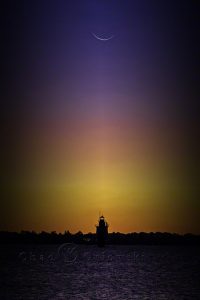
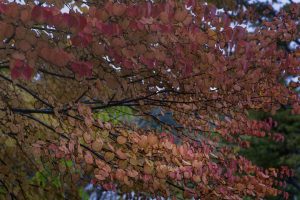

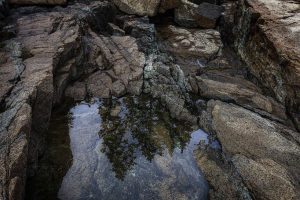


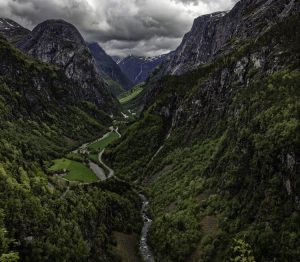
Recent Comments